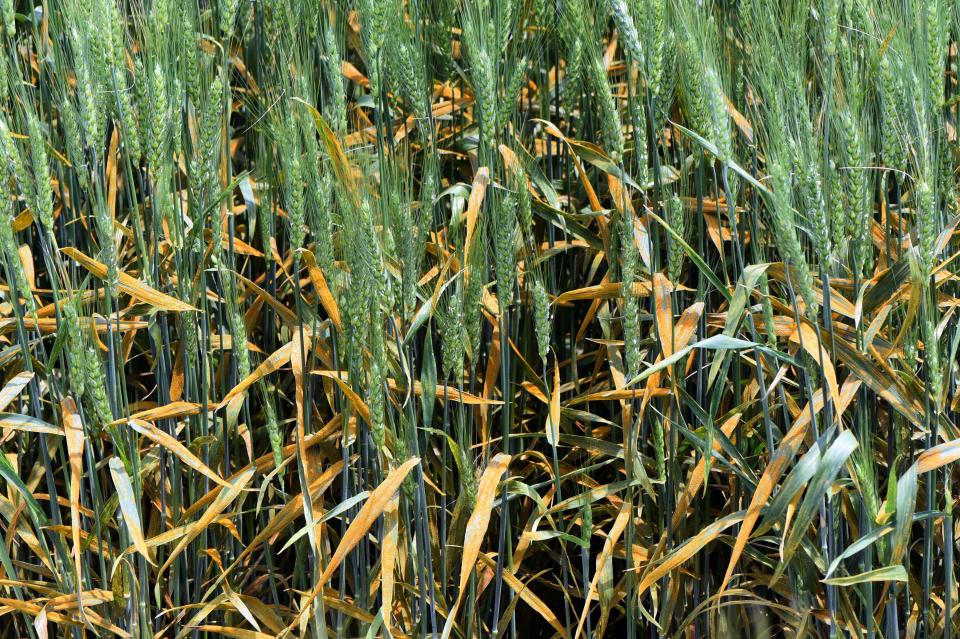
Wheat Disease Update: Stripe Rust, Leaf Rust, and Fusarium Head Blight
This week high levels of stripe rust (Figure 1) and leaf rust (Figure 2) were observed in wheat plots at the Eastern Nebraska Research and Extension Center (ENREC) near Mead, Sauders County, and at Havelock Farm in Lincoln, Lancaster County. Fusarium head blight (scab, Figure 3) was also observed at both locations.
The stripe rust and leaf rust distribution maps (Figures 4 and 5) remained largely the same from last week, with stripe rust observed in one additional county (Madison) and leaf rust observed in two additional counties (Saunders and Thayer) this week.
The high severity levels of stripe rust and leaf rust are due to the moisture that prevailed during the last few weeks and, for stripe rust in particular, the cool temperatures that accompanied the moisture. Fusarium head blight (scab) is favored by frequent, moderate to heavy rainfall before and during the flowering growth stage, which is when the majority of infections occur on wheat heads.


Management
If the wheat crop is heading or is at the early flowering growth stage and there have been significant amounts of precipitation during the last few weeks, it is recommended to apply a fungicide with good efficacy on scab, such as Prosaro, Miravis Ace, Caramba or Proline. Such a fungicide will also effectively control stripe rust and leaf rust. Where wheat is not headed and stripe rust or leaf rust has been observed, it is recommended to apply a fungicide to protect the flag leaf.
Wheat in many fields in southeast and southcentral Nebraska is past the flowering growth stage and therefore, it is too late to apply a fungicide to control sab, stripe rust or leaf rust. In these fields, variety resistance and the residual activity of fungicides applied earlier are the only remaining management options. Note that some wheat varieties with resistance to stripe rust may be susceptible to leaf rust and vice versa, and some varieties may be resistant or susceptible to both diseases.
Online Master of Science in Agronomy
With a focus on industry applications and research, the online program is designed with maximum flexibility for today's working professionals.
